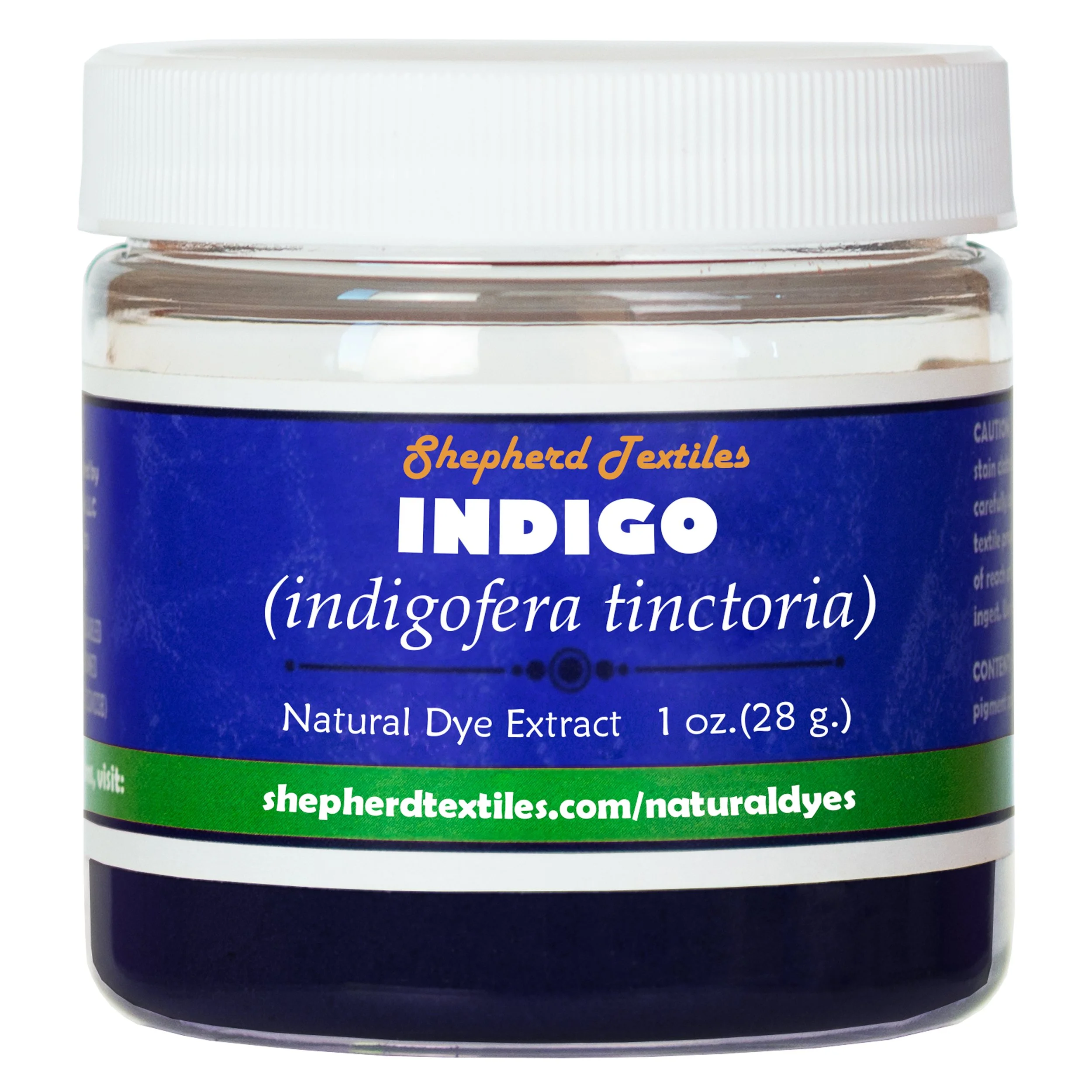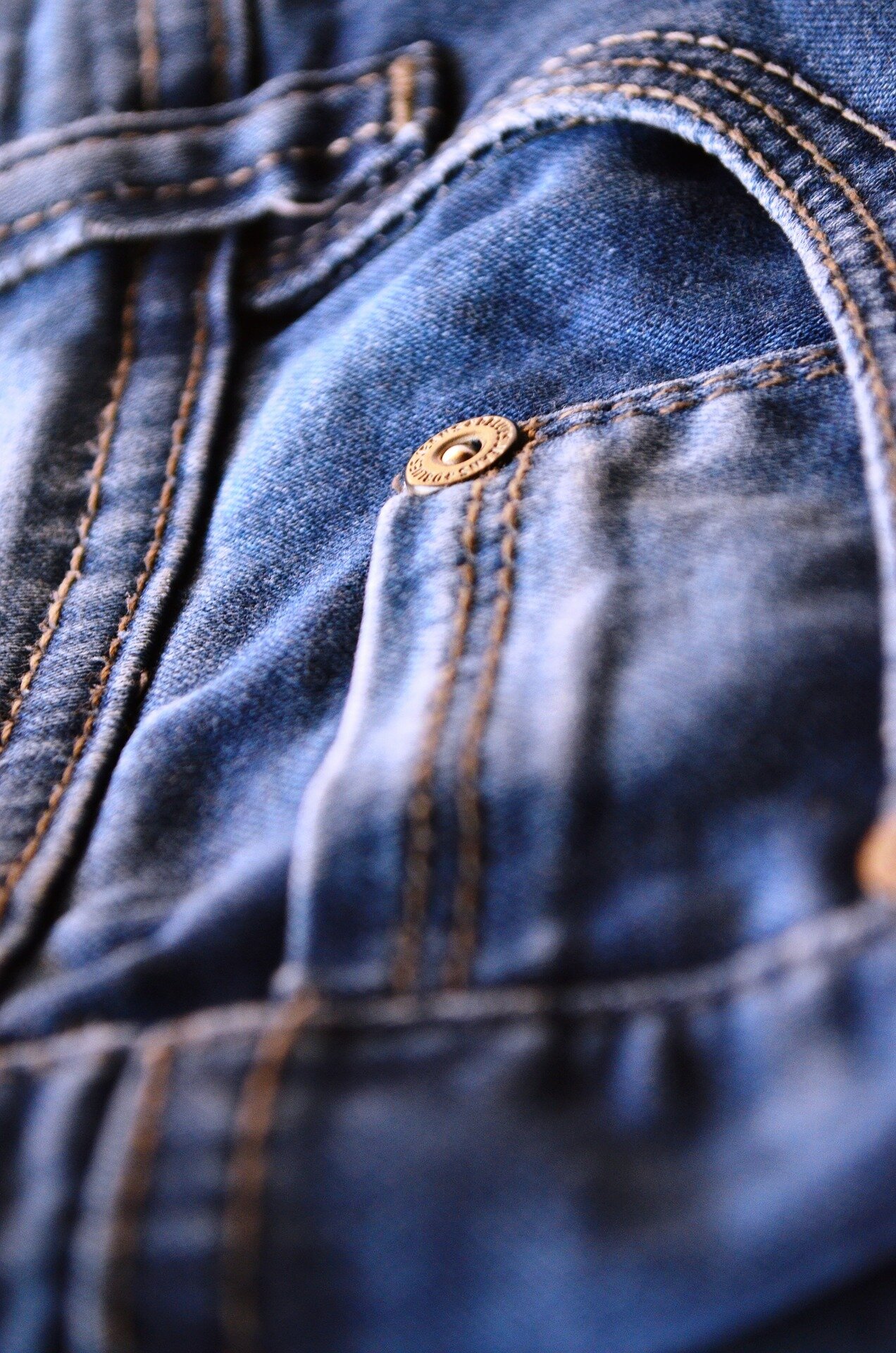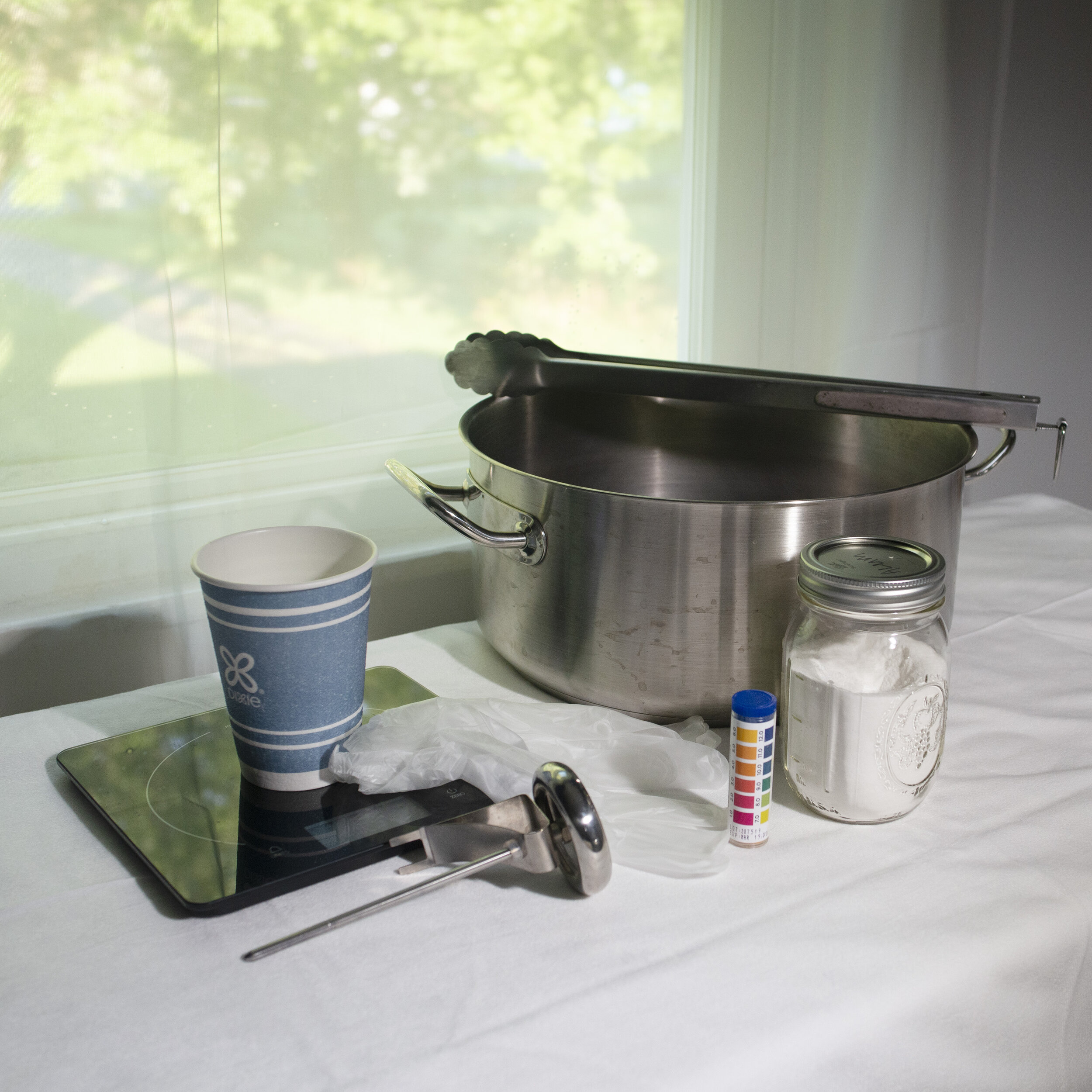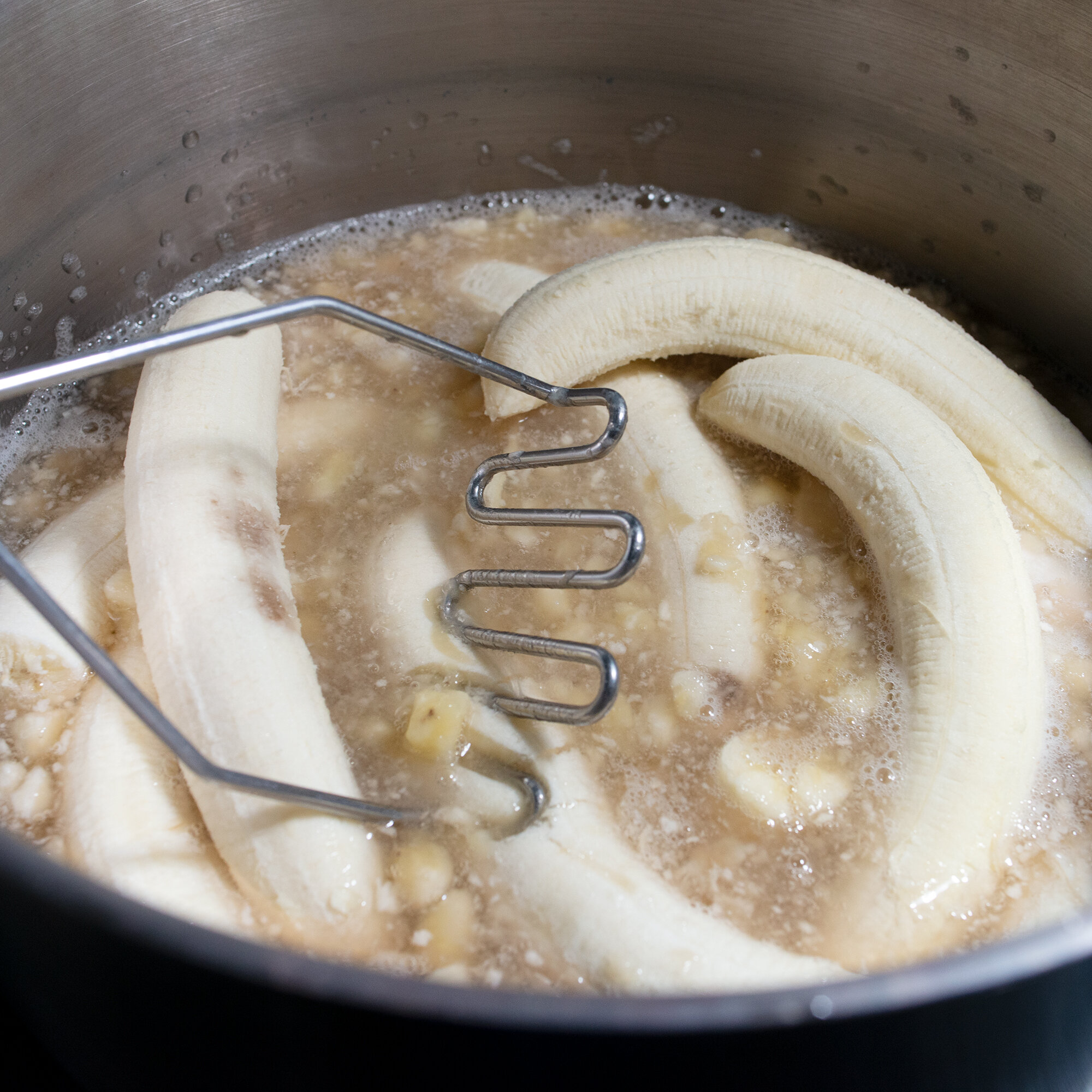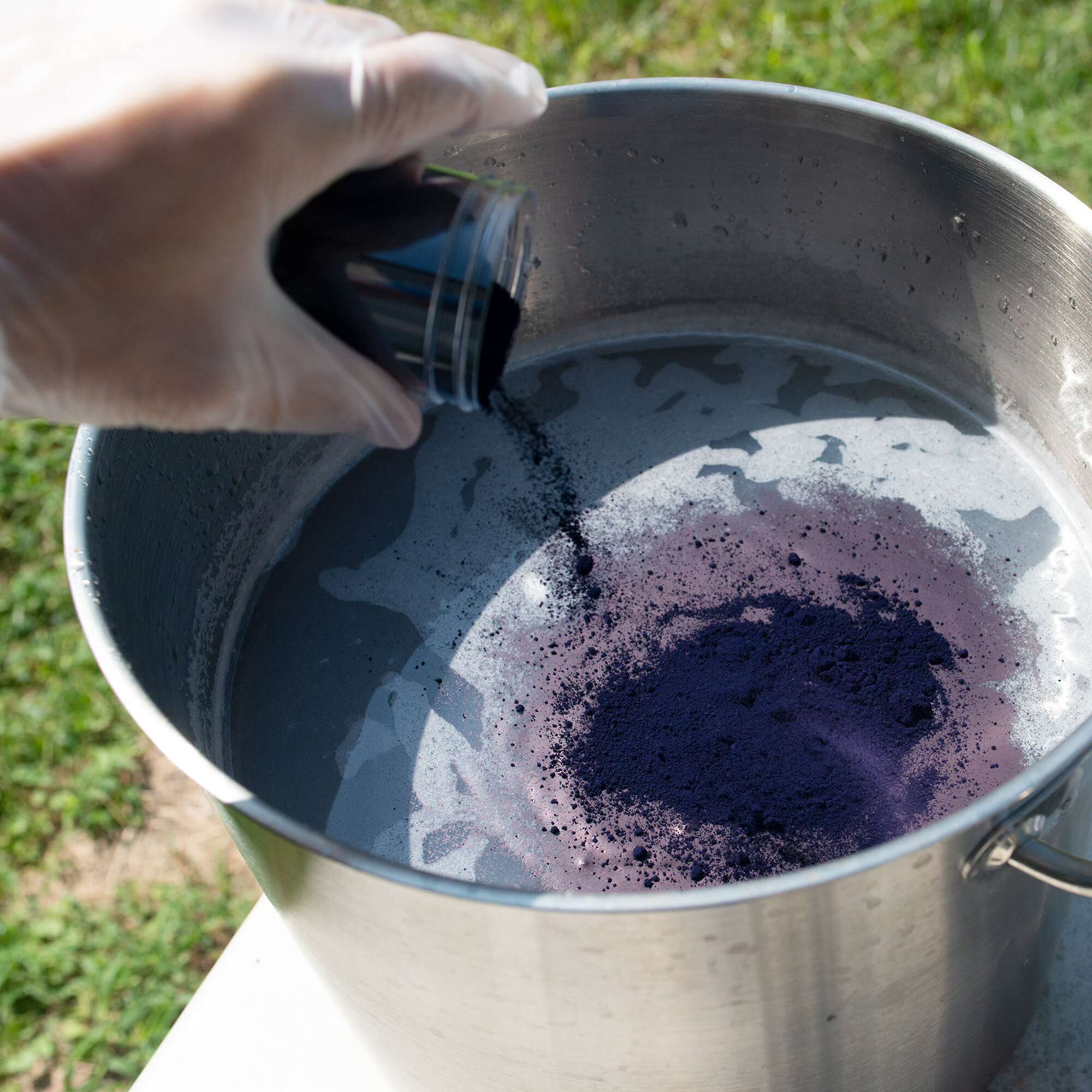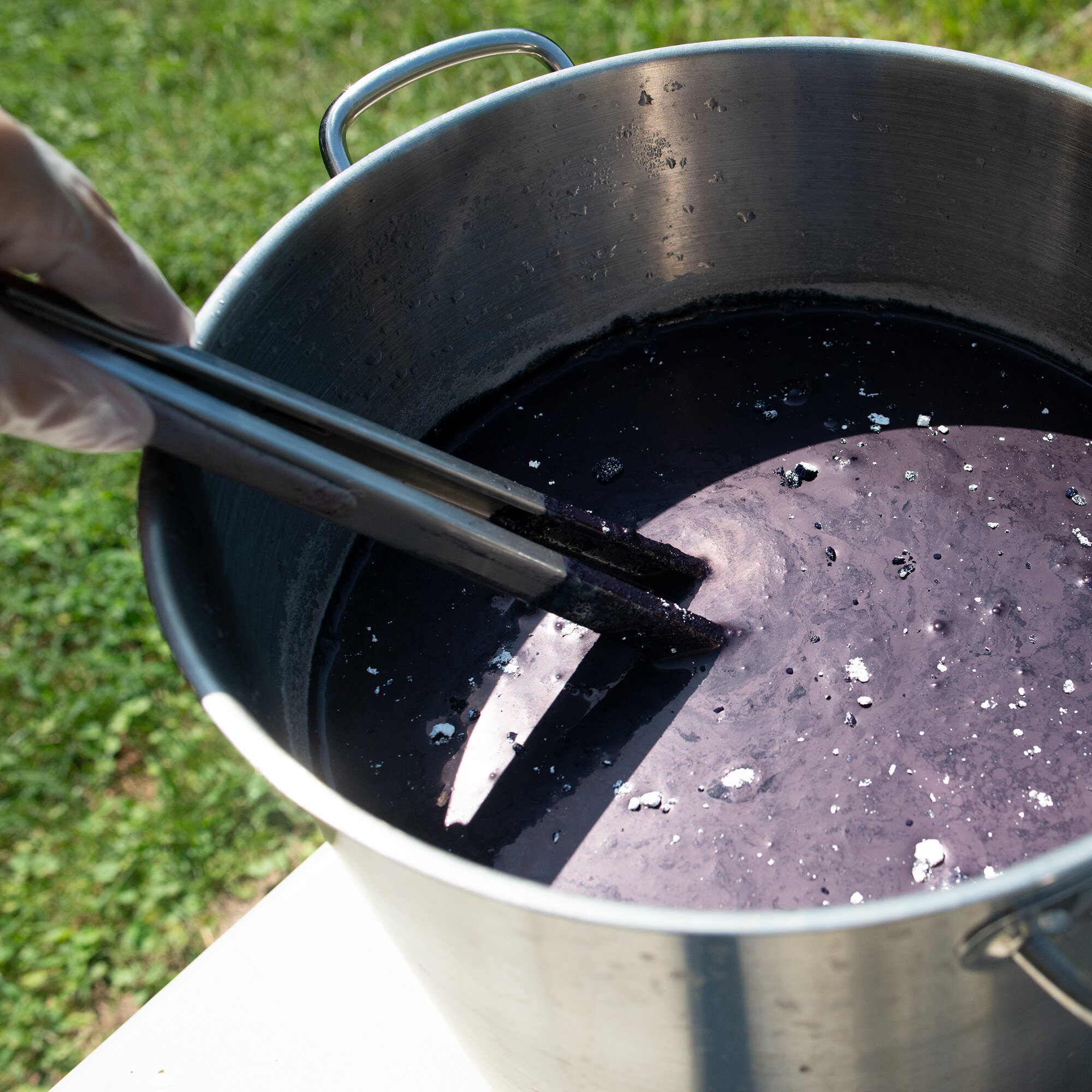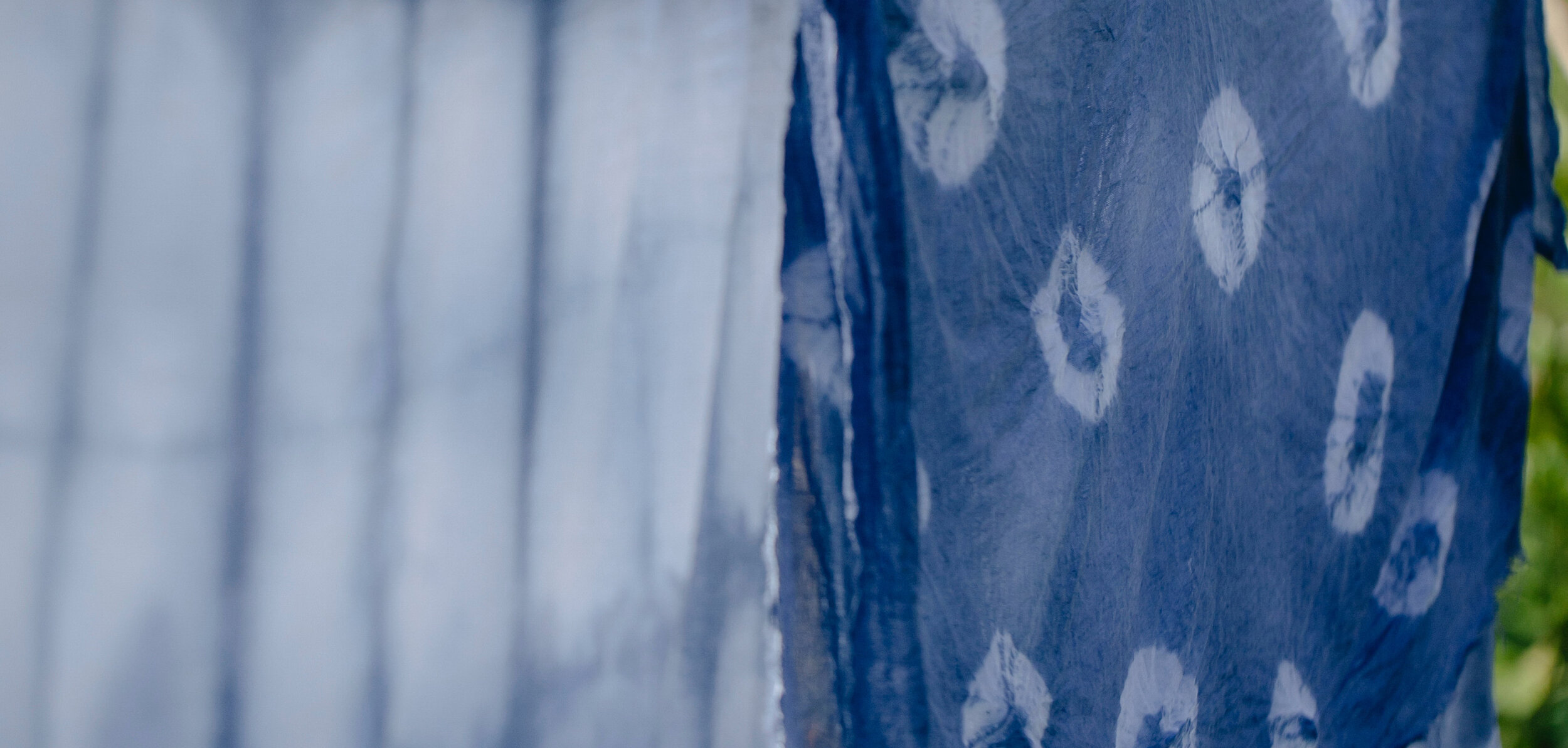
Indigo Extract
A Guide to Indigo Extract
Shepherd Textiles Indigo Extract is made from the indigo plant indigofera tinctoria. Indigo contains nature’s strongest blue pigment, indigotin. Indigotin is insoluble in normal water, however, and must be dissolved in a special reduction vat to be used as a dye. Our Indigo Extract comes from a farm in South India that practices sustainable growing practices. After extraction, the wastewater and composted leaves are returned to the field to feed the next crop. This is a remarkably strong indigo that contains between 38%-40% indigotin by weight, making it up to twice as strong as most indigo on the market. Product of India. Produced by a GOTS (Global Organic Textile Standard) certified manufacturer.
1. Background on Indigo
Natural indigo is extracted from the leaves of indigofera tinctoria, a short shrub that is a member of the legume family. Indigo is now cultivated world-wide, but is probably native to South Asia (Glowacki et al. 2012:542). It has been the most important source of blue dye for much of recorded history, and there is archaeological evidence that indigo was being used to dye fabric up to 4,000 years ago in India. Natural indigo was a major global commodity in the 18th and 19th centuries, and industries sprang up all across the world. It was one of the major exports of the antebellum U.S. South, especially around low-country South Carolina and Georgia, which have subtropical climates ideal for growing indigo. However, a German chemist identified the chemical structure of indigotin and discovered how to synthesize it in 1883 (ibid:542). This lead to the collapse of the indigo-growing industry. Today indigo is still the most important blue dye for clothing and jeans, but almost all of it is synthetically produced indigo, not indigo extracted from a plant.
Indigo is unique among all natural dyes in how it attaches to fiber. It cannot just be boiled in water, because it will not dissolve. Indigotin will only go into solution in water that is reduced (all dissolved oxygen has been eliminated) and alkaline (PH 10.5 or 11). To create these conditions it is necessary to construct an “indigo vat.” When the correct conditions are created, indigo powder will dissolve into the water. A piece of fiber is dipped in the vat, and when it is pulled out, oxygen in the air forces the dissolved indigo back out of solution, and it chemically bonds to dipped fiber. Depending on how many dips are used, indigo can give a range of blues, from sky blues to dark midnight blues, that are strong, lightfast, and colorfast.
2. Safety Precautions
DO NOT INGEST. This extract was prepared for textile dyeing, not as an herbal supplement or for dyeing hair.
Avoid eye contact. If eye contact occurs, rinse with cool water.
Open carefully to avoid spilling or creating dust.
If a spill occurs, quickly wipe up with a paper towel or disposable rag.
Once Indigo Extract is dissolved in a vat, it can permanently dye clothing, countertops, rugs, utensils, or other property. Avoid contact with anything that is not meant to be dyed.
Use only dye pots and utensils dedicated to dyeing. Do not use any pots, containers, spoons, tongs, thermometers, or other utensils that will be used for food preparation.
Indigo Extract should be used only with adult supervision.
Shepherd Textiles, LLC is not liable for any misuse of this product or any unintended staining of your clothing, workspace, or other property. Use only as directed.
3. Recommended Supplies
Dye pot/bucket. We recommend a 5-gallon dye pot or bucket; it needs to have plenty of room for fibers to move around and for the liquid to circulate freely.
Metal tongs. A pair of tongs is useful for stirring and for dipping fabric. Use tongs dedicated to dyeing, and not for food preparation.
Rubber gloves. Wear rubber gloves while handling pickling lime. You may also want to wear them while dipping fiber if you prefer not to end up with blue fingers.
Scale. Use a scale to weigh out fiber, mordant, and extract powder.
Pickling Lime/Cal. Calcium hydroxide is used to adjust the PH of the indigo vat. It is sold in some big box stores as “pickling lime,” usually near the mason jars. It is also available in Mexican supermarkets as cal for making masa. Check the spice section.
Disposable cup. For mixing the extract powder to a paste.
4. Preparation: Building a Banana Vat
Unlike other natural dyes, Indigo Extract does not require that fibers be mordanted or pre-treated with a tannin. Instead, indigo requires the construction of an “indigo vat” or “reduction vat.” The goal of an indigo vat is to create a pot of water that is reduced (contains no dissolved oxygen) and alkaline (PH 10.5-11). There are many ways to achieve this, some using rather unpleasant industrial chemicals. Our favorite is the banana vat, which relies on the natural fermentation of fruit sugars to expend the dissolved oxygen in the water, and pickling lime to make the vat alkaline. It gives a strong, clear blue, and also leaves dipped fibers smelling much better than a vat made from thiourea dioxide.
1. Mash and boil 5 pounds (peeled) of very over-ripe bananas.
3. Add 1 oz. Shepherd Textiles Indigo Extract and 1.5 oz pickling lime/cal.
2. Strain the banana water into the indigo dye pot.
4. Stir slowly and carefully, without introducing bubbles.
Instructions for Building an Indigo Banana Vat
A banana vat takes advantage of the natural fructose in overripe fruit to create a reduction environment. Fructose is a “reducing sugar,” unlike common table sugar. In a warm, high-PH environment, the aldehyde in fructose will spontaneously oxidize (Saikhao 2018:107). This exhausts the dissolved oxygen in the indigo vat, and creates the appropriate reduction environment in which solid indigo powder will dissolve into the usable form of leucoindigo.
For a four-gallon vat (a five-gallon bucket or stock pot filled 4/5 full), purchase 8 lbs. of very over-ripe bananas. The peels should be about 50% brown; if you can’t find them that ripe at the grocery store, purchase the ripest ones you can find and store them in a paper bag for a few days. The banana vat takes advantage of the natural fructose in over-ripe fruit; if you try to use bananas that are not ripe enough, there will not be enough natural sugar and your vat may not successfully reduce.
Peel the over-ripe bananas, put them in a stock pot, and mash well with a potato masher. It may help to add a little water. When they are thoroughly mashed, fill the pot mostly full with hot water and boil gently for half an hour to extract as much natural sugar as possible.
Strain the banana water into your indigo vat. We recommend returning the banana mush to the stock pot, filling with water, and simmering again for 10 or 15 minutes to extract as much fructose as possible. Strain this second wash into your indigo vat.
Top off the indigo vat with hot tap water until it is 4/5 full.
Sprinkle 1.5 oz. pickling lime/cal and 1 oz. Shepherd Textiles Indigo Extract onto the surface of the vat. Using tongs or a metal spoon, gently stir in a circular motion to incorporate. Be careful not to whip the liquid or introduce bubbles—oxygen in the water is the enemy of an indigo vat. Cover.
Stir again an hour later, and again after two hours, until everything is incorporated.
Keep the vat heated to between 100-110F to help the reduction take place. If it is a hot day you can put the vat outside in the shade (don’t put it in direct sunlight, it may overheat and stop the reduction). If it is a metal vat you can put it on the stove on a very low setting. If your vat is a plastic bucket or too big for the stove, you can fill your bathtub with hot water and let the vat sit in the water bath. Refresh with hot water as needed.
The vat may effectively reduce in 4 or 5 hours, but plan to leave it overnight.
The next day there should be dark blue foam on the surface known as the “indigo flower.” The flower is undissolved indigo; this is a good sign, as it means undissolved indigo has been forced out of the vat. The liquid itself should be mostly clear and green-yellow, almost the color of olive oil. At this point, your vat is ready for dipping.

Dipping Indigo
5. Dipping Indigo
Indigo blue is applied by dipping fiber or yarn in the indigo vat for up to 15 minutes at a time, then removing it to allow the dissolved indigotin to oxidize. The fiber can then be dipped again until the desired depth of blue is achieved. The key to success is to make sure your fiber is thoroughly wetted—soak it at least 2 hours, and overnight if possible. That way the indigo vat solution will penetrate the fiber thoroughly; otherwise it may end up dyeing the outside and leaving the interior fibers undyed.
Instructions coming soon.
All images and text are copyright of Shepherd Textiles, LLC. Do not reproduce without permission and attribution.


